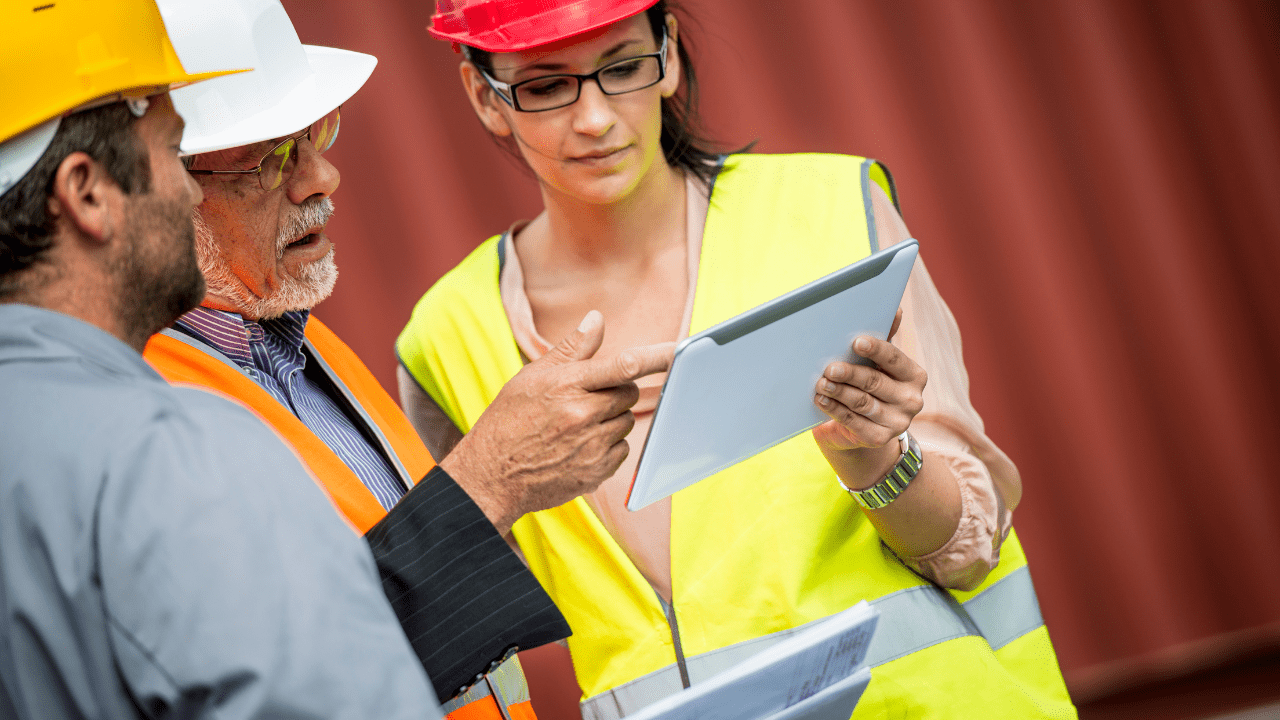Learn all about our Ultra-Containment Berm products, which can be used to containing spills from trucks, vehicles, equipment, and larger containers. In most cases, spill containment berms are required by EPA and SPCC regulations. And because of the size of the items they are used with, there usually aren’t a lot of options. UltraTech’s got you covered!
What are containment berms? Generically, they could be described as spill containment pools. They are often used for containing spills from trucks, vehicles, equipment, and larger containers.
Why do containment berms get used? In most cases, they are required by EPA and SPCC regulations. And because of the size of the items they are used with, there usually aren’t a lot of options.
How are containment berms used? The answer to this is different for each model but basically, you drive your vehicle into it, push your equipment into it, load your drums or IBC into it… and then you go about your business knowing that if any of that stuff leaks, you’re protected.
Alright, let’s talk specifics… there are currently eight different models of Ultra-Containment Berm. The one thing that differentiates each one of them is the way in which the sidewalls operate. Some of them are, what we refer to as, true drive-in and drive-out. This means that once the initial setup is completed, there is no set-up or take-down required and you can drive in and out of the berm. Other models require some sort of manipulation of the sidewalls in order to drive in or out.
So why would you choose one model over another? Well, a few factors usually come into play: Cost, convenience, and application.
As is often the case, cost and convenience go hand in hand and, if I remember my high school math terminology, are directly proportional… so the more convenient the model, the more it will cost relative to the other models.
Those models that are true drive-in and drive-out are typically more expensive than their same-sized counterparts that require manual setup.
But if your application is something, for example, where you park a tanker truck in the containment berm and then you don’t move it for a week or two, you may not feel that a drive-in/drive-out berm is necessary.
One last thing and then I’ll get into the model-specific info. With the exception of one model, the standard height is 12″ tall. There are some models that we can build with taller walls but I won’t address those specifically. Feel free to call us for more details.
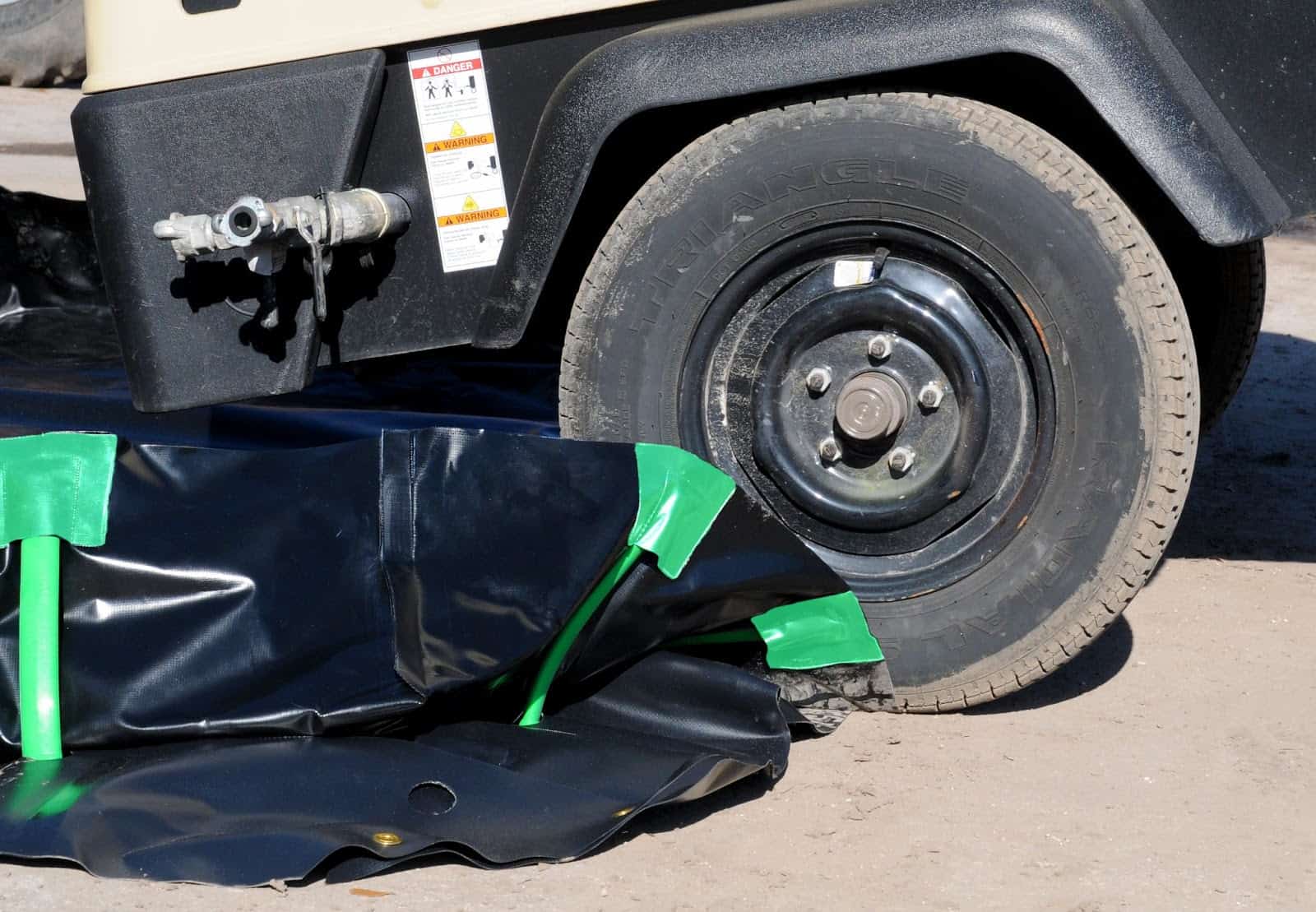
I’ll start off with the very first model that we introduced way back when, the stake wall model. This is one of the true drive-in/drive-out models that we offer. The sidewalls use these flexible, urethane stakes around the perimeter for support and structure. When a truck or vehicle rolls over the sidewall the stake has enough flex to just bend under the weight. And once the wheel clears it and the weight is removed, the stake automatically returns to its upright position.

The collapsible wall model is not true drive-in and drive-out as it relies on a series of heavy-duty PVC sidewall frames for its support. Each frame has two feet, one on either side, that swivel 360 degrees. When the sidewall is standing up the feet are perpendicular to the top frame as shown here.
When entry into or exit from the berm is necessary each of the feet in the wall that will be lowered must be swiveled 90 degrees so that they are parallel with the top frame. Once that is done, the sidewall can be lowered and, in turn, driven over.
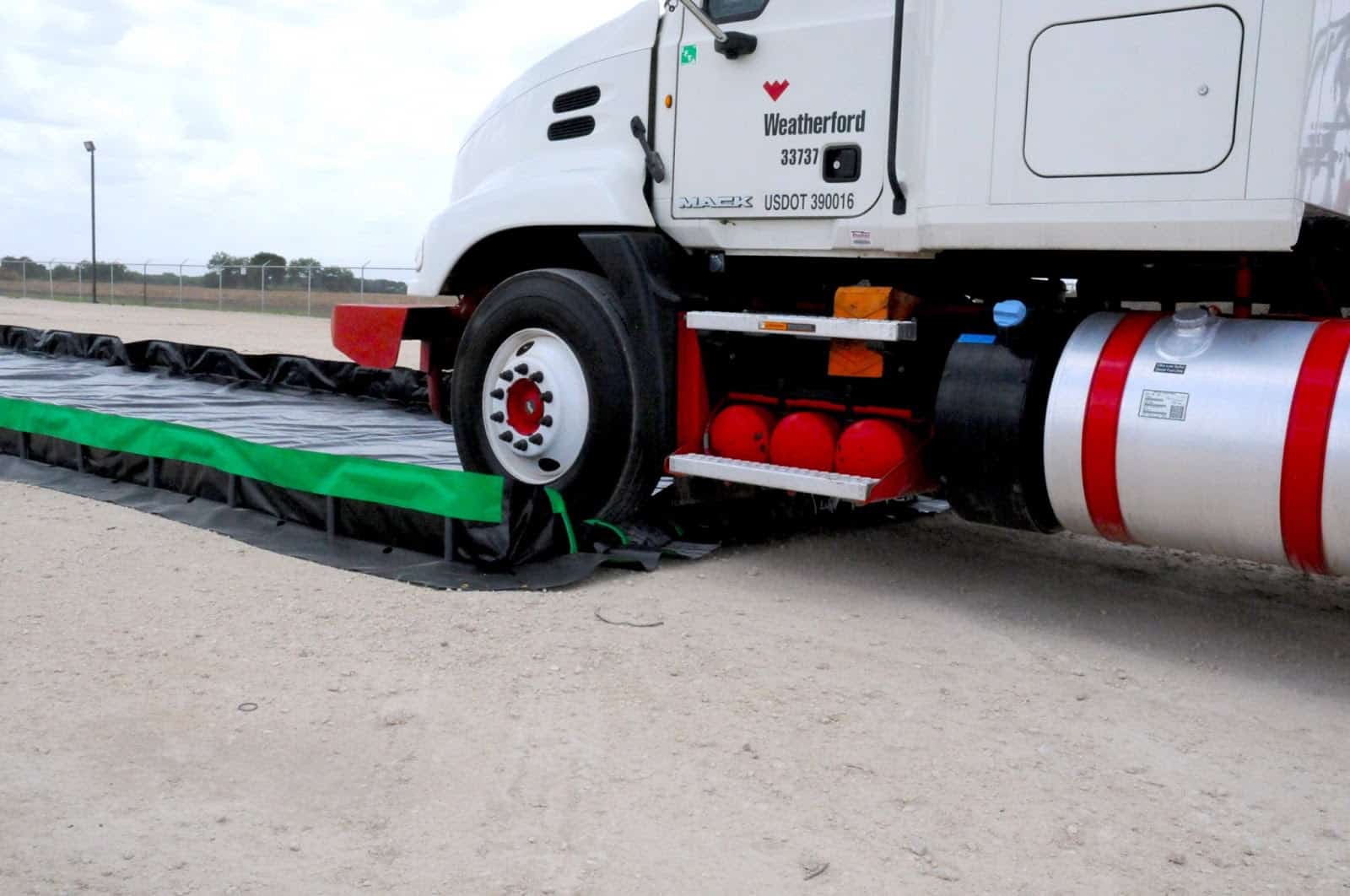
The ultimate model takes the best of both worlds from the previous two models. We use the PVC sidewall frames from the collapsible wall model on the long walls and the flexible stakes from the stakewall model on the short walls. This allows us to create a true drive-in and drive-out containment berm that is more economical because of the cost savings that come from using the PVC sidewall frames instead of stakes.
So, initially, for this model, there will be some setup required as the long sides will have to be manually raised. But once that is done there will be no more setup or takedown required for your day-to-day operations.
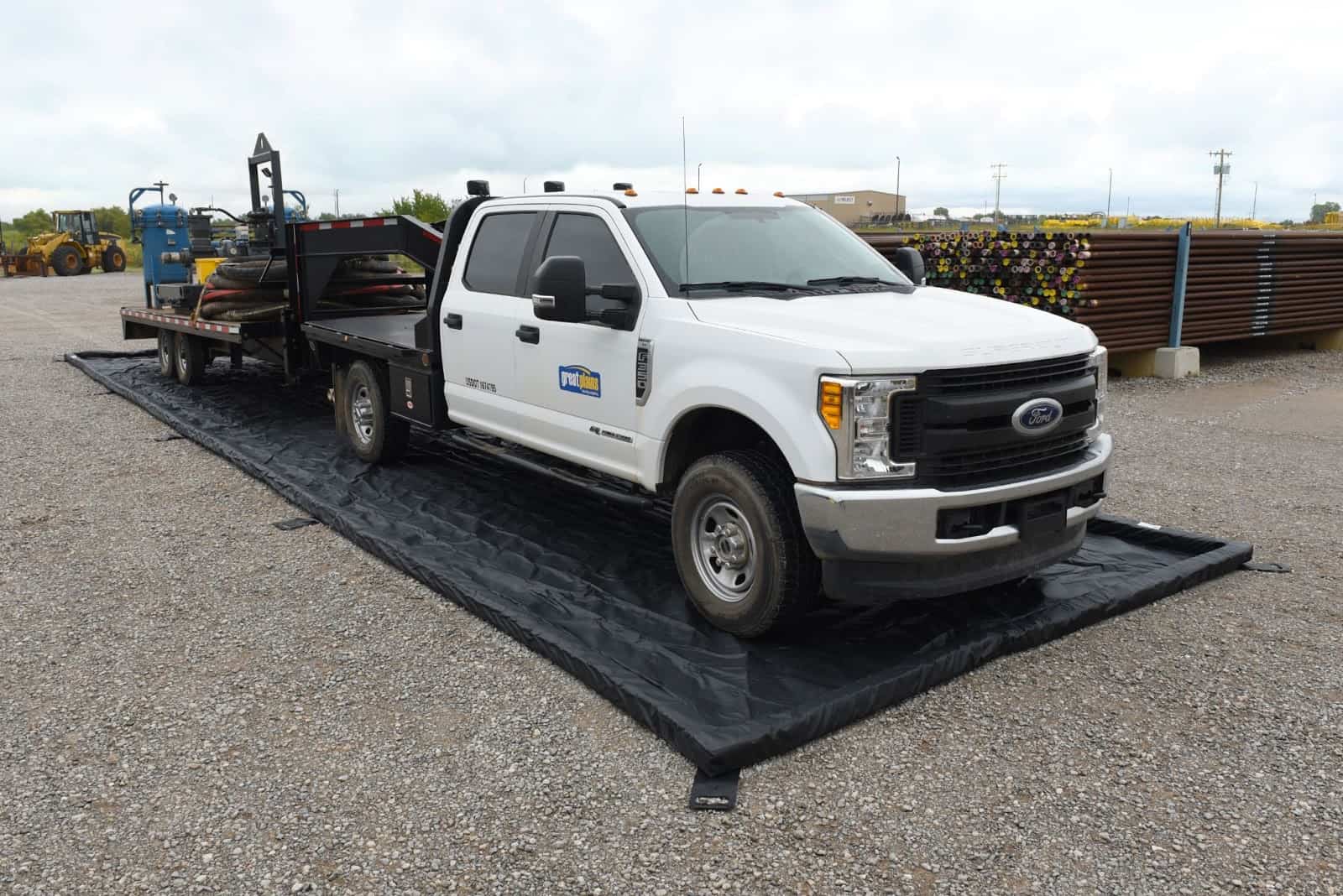
Next is the foam wall model. This model relies on foam blocks throughout the perimeter of the berm for its sidewall structure. This model is true drive-in and drive-out… simply unfold it and lay it out in the area you plan to use it in and you’re done. No muss, no fuss.
Now, the most popular height for this model is the 4″. But it’s also available in standard 2″ sizes and custom heights can be made.
It kind of goes without saying, but I’m going to say it just to be thorough… since this is the only containment berm model with a standard height of 4″ instead of 12″, you’re going to lose a significant amount of containment capacity relative to the other models. Just something to keep in mind when doing a side-by-side comparison.

The rapid rise model is unique from all the other models in that the sidewalls will actually lay flat during day-to-day operations. In the event of a spill, a foam ring encased in the top perimeter of the berm’s sidewalls will float on top of the spilled liquid causing the sidewalls to rise with the level of the liquid that it is collecting. These sidewall struts provide additional support when a spill reaches higher levels.
Because of the way the sidewalls function on this model, it is considered a true drive-in and drive-out berm. And it has the added benefit of the lowest profile of any of our berms which will minimize tripping hazards.
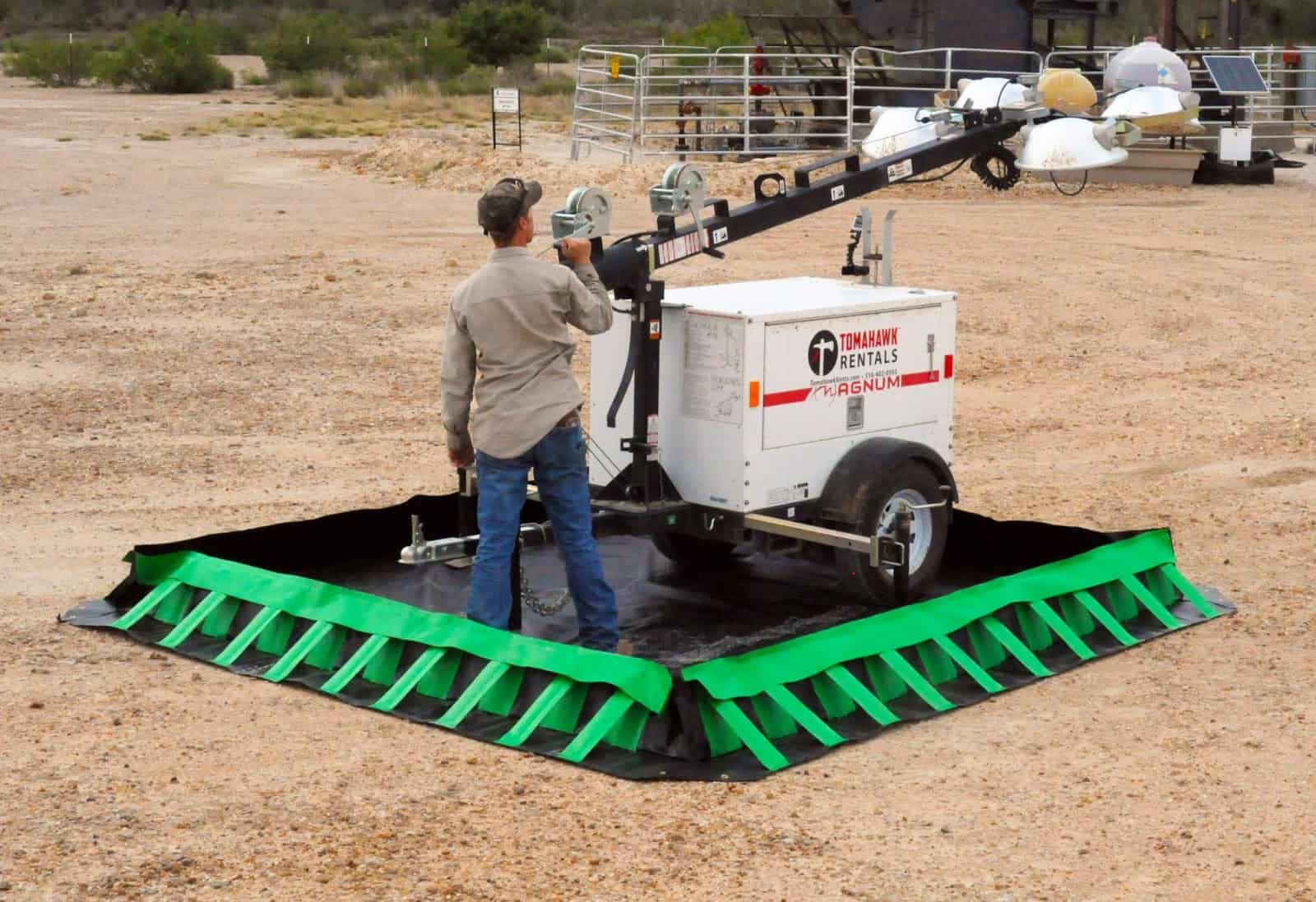
The compact model when it is folded up for shipping or storage is, by far, the most compact package compared to the other models. Again, depending on how and where you’ll use your berm, this may or may not be of significance.
The compact model uses struts to provide support for the sidewalls. Each strut is attached to the berm so it cannot be lost or misplaced. To set the wall upright, each of the struts is inserted into a sleeve that’s heat welded to the sidewall. To lower the sidewall, simply remove each strut from its sleeve.
Another advantage that this containment berm has over the other models is that when the sidewall is down, it has the lowest profile available. This is significant when using forklifts, pallet jacks, or other equipment that has a low ground clearance.

The economy model is the least expensive model in our line. For sidewall support, we use a series of L-brackets. These get inserted into sleeves that are heat welded to the sidewalls similar to what we saw with the compact model. The bottom of the L points inward toward the center of the berm.
Aside from the cost savings on this model, another potential advantage is that it is the only model that does not have an apron around the perimeter. This is beneficial for applications where there is no excess footprint area available. One example of this is a storage room or freight elevator where containment was needed and the customers wanted wall-to-wall protection.

Last but not least is the modular model which is also known as the gorilla berm. Why gorilla? Because gorillas are incredibly strong and, unknown to most animal experts, have an affinity for spill containment in the wild. It’s also possible that I had a lapse in judgment and took advice from the sales guys. But… regardless of the name, this is a really cool containment berm.
Instead of a brace or a stake or a frame for sidewall support like we’ve seen in other models, the modular model uses triangular-shaped foam blocks. These blocks are 6-feet in length and along with corner sections provide the structure for the berm. The foam is coated with a polymer for added durability as well as chemical resistance.
Once the blocks are laid out in the desired configuration, the entire area is covered with PVC fabric. To keep the fabric secure and in place, a rebar or steel rod is placed on top of the fabric and then into a built-in channel at the top of each foam block.
One big advantage of this model is that it can be reconfigured as needs change. For example, if you needed a smaller containment area, you can very easily just remove a few of the blocks, bring the remaining sections together and replace the PVC fabric. Done.
Another thing is that, while all of the Ultra-Containment Berms can be repaired in the field, this model is the easiest.
While we’re on the subject of repairs, we do have a repair kit available for all of our berms which includes a large piece of the appropriate material and instructions. Typical repairs are fairly quick and easy and only require a heat gun.
Okay, now that we’re done with the different models, let me talk a little about the different accessories and options that are available.
For applications that have a lot of vehicular traffic, there are track belts available. These are 30″ wide pieces of material that are placed inside of the berm so that they take the brunt of the abuse from truck and vehicle tires. That way, down the road when there are signs of wear and tear, you only have to replace those track belts instead of the whole berm.
Ground tarps are available to provide protection for damage that may occur from underneath the berm. So if you were to use one, you would first lay down the ground tarp and then put the berm on top of that. For that reason, we usually recommend a tarp that is about 4 feet wider and longer than the berm itself.
For applications where there are fueling operations, the hose stand can be used to act as a bridge over the berm’s sidewalls. Fuel hoses are heavy and have the potential to push the sidewall down which will reduce the berm’s containment capacity.
Since most containment berms are used outside, there is the accumulation of rainwater that can be cause for concern. There are two ways that this can be addressed. The first one is with a drain. These can be installed in the field or at the factory, it’s a fairly simple process. The drain consists of a bulkhead fitting that is installed in the sidewall and then a drain plug that screws into the bulkhead fitting. Multiple drains can be installed for larger berms or for quicker draining.
Okay, a few final notes and then I’ll let you go. If you haven’t seen it already, there are “standard sizes” for each model listed in our catalog and website. I use quotation marks because usually, you’d expect “standard” to mean “stock”. But it’s just not feasible for us to stock so many sizes of so many models. So, with few exceptions, Ultra-Containment Berms are built to order. How long will it take? Well, that depends, of course, on what else we are working on but rest assured we will get it done just as quickly as possible. Give us a call when you’re ready to order and we can give you a good estimate.
You’ll see that most models are offered in one or two different materials. We list the materials that are a good fit for most applications. However, each material has its own set of advantages. And for your application, there may be something that’s better than what is shown in our catalog or website. If you have any questions, please contact us for more information.
And, while we’re on the subject of materials, this would probably be a good time to mention chemical compatibility. The materials that we offer are chosen for, among other things, their compatibility with a wide range of chemicals. However, as with all of our containment products, it is recommended that you refer to the compatibility guide on our website to ensure that the berm you want is compatible with the chemical that will potentially spill or leak into it.
We hope that this has helped you to better understand the Ultra-Containment Berms. If you have any questions, please feel free to contact us at (904) 288-8195 or via our website at www.spillcontainment.com

